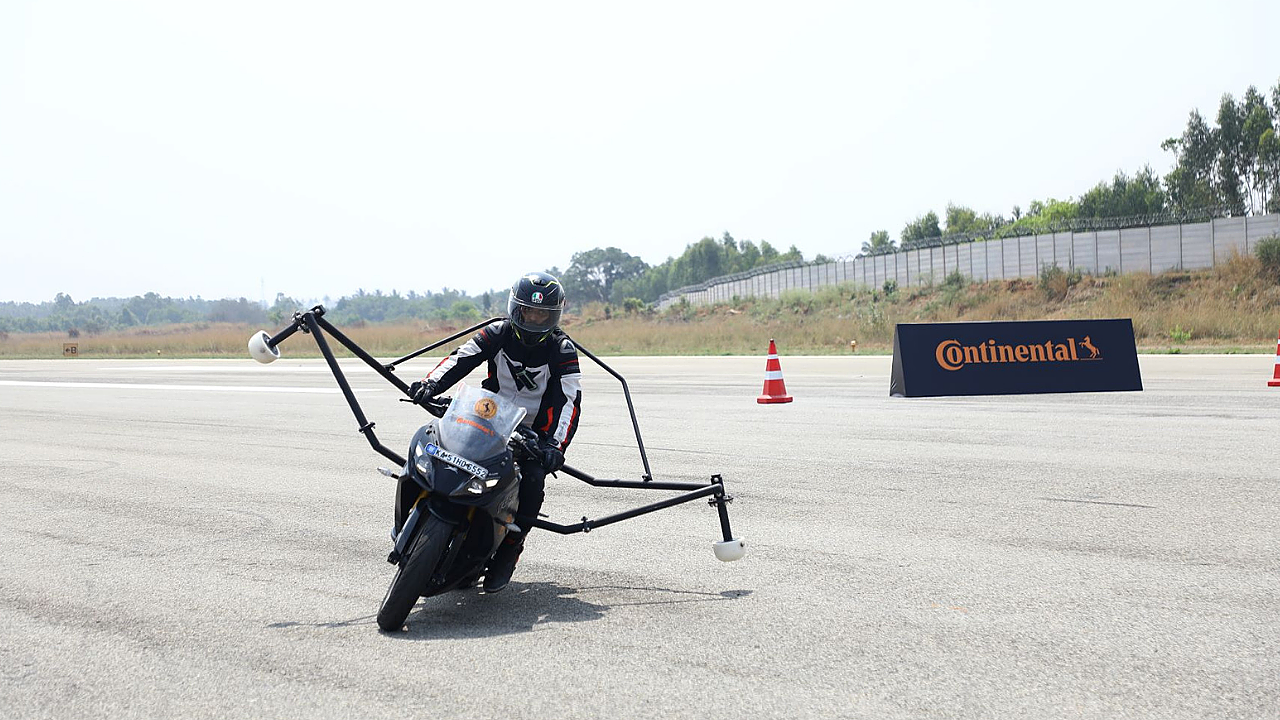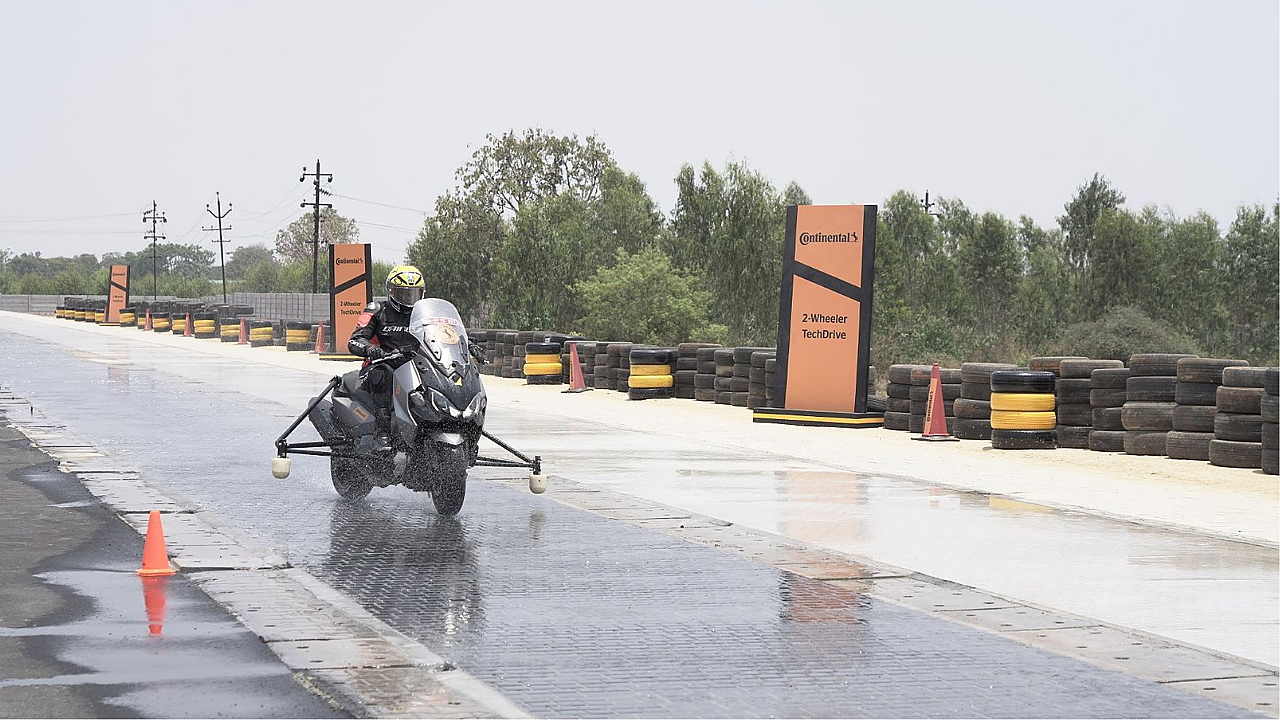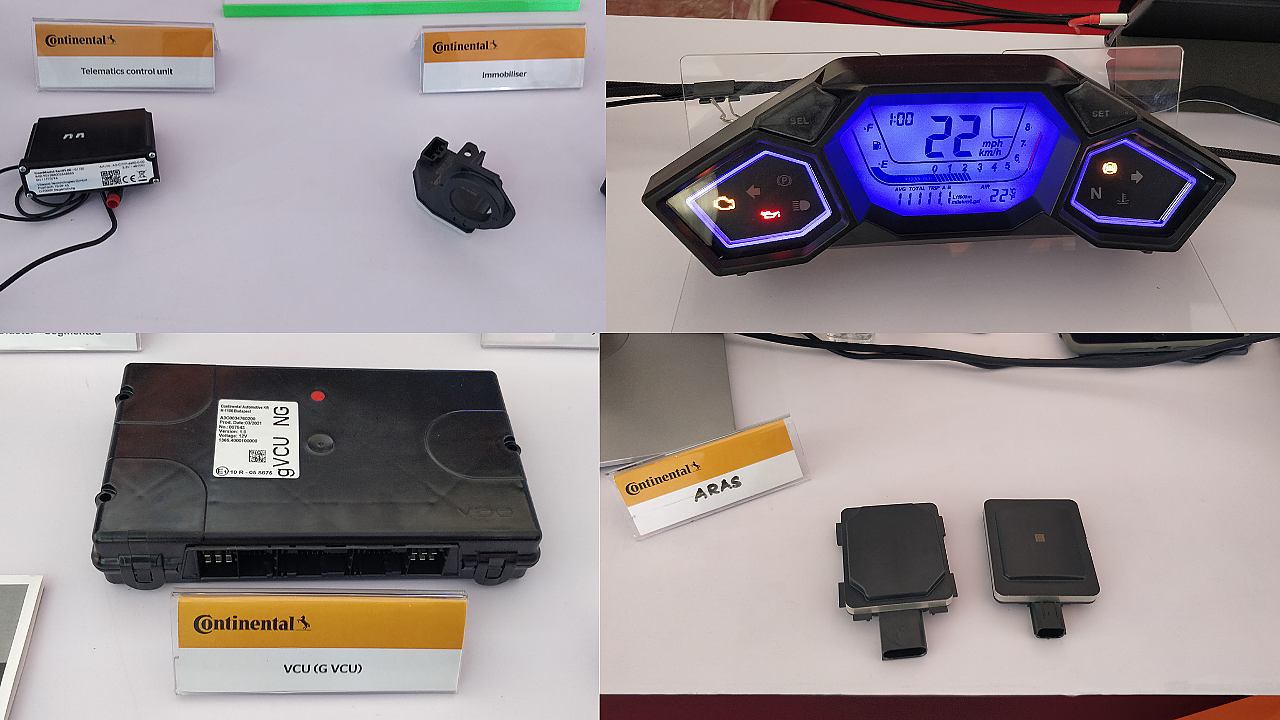
In a bid to support the growth trajectory of India’s growing 2W segment, which is already the largest 2-wheeler market in the world, technology company Continental Automotive India conducted a two-day 2-wheeler TechDrive event.
Held on April 4 and 5 at the Taneja Aerospace and Aviation in Hosur, the company showcased its offerings in Advanced Riders Assistance Systems, Advances ABS, connected technologies, software solutions, safety solutions, tyres, and surface solutions, among other technologies.
Several 2W OEMs participated in the exhibition and also witnessed the demonstration of innovative, intelligent, and affordable solutions at the specially built test track in the private airstrip.
Prashanth Doreswamy, President and CEO, Continental India, said, “This event is aimed at showcasing our eclectic range of technologies that have been carefully developed in the market for the market to suit the needs of the local consumer. With a strong R&D team strengthening the product development value chain, Continental aim to provide our customers with cutting edge, affordable, and reliable solutions.”
Speaking to Mobility Outlook, Doreswamy said the company could not organise tech shows (primarily conducted at the customers’ place) due to the pandemic. “This is the better time for us to demonstrate. We thought of organising these Tech Drives for 2Ws and 4Ws separately.” Accordingly, there will be a similar event in the near future, showcasing several innovative technologies for the passenger vehicle segment.
Asked about the feedback from the customers who visited the show, he said it was encouraging. Besides, it allowed the company to better engage with the customers with the products on display and demonstrate technologies at the proving ground. These will be useful for those involved in new product development.
Currently, the revenue share from solutions to 2Ws is estimated at 15% to 20%. The new technologies have the potential to increase the content per vehicle, eventually doubling the current level in about three years, he added.
Technologies on Display
As part of its Advanced Rider Assistant Systems (ARAS) for 2Ws, the company demonstrated the Blind Spot Detection (BSD) solution, which monitors blind spots for the rider on the adjacent lanes with a radar sensor. It provides visual warnings to the rider in case of any approaching vehicles. As an enhancement, this system can also indicate hazardous lane changes through the Lane Change Assist (LCA) feature. Rear-facing radar sensors can scan the road area behind and next to the motorcycle, warning the rider if a lane change is not recommended at a given point in time.
Optimised Curve Braking (OCB)
OCB helps riders apply brakes efficiently in curves or turns with a high tendency of accidents due to the wheels locking up. ABS first takes the angled position of the motorcycle (using lean angle information from the Continental sensor box) into account. Then, depending on the incline, the braking system control becomes highly sensitive to prevent wheel lock while providing good braking and steering. This improves the vehicle’s handling in curves, making the braking process a lot safer.

Digital Service Platform
The system empowers vehicles with digital services to create a seamless experience for the end consumers and shared mobility, fleet, and logistics operators. The services offered under this platform include Key as a Service, live tracking, geo-fencing, User Registration & Management, B2B Interface, Smart Booking, and Trip History.
Telematics Control Unit (TCU)
Connectivity is a key element in the automotive world and will even be more important in the future. The 5G technology will enable future mobility by offering significant network improvements and benefits. Enhanced data rates, higher reliability, and ultra-low response times will allow real-time communication between vehicles, infrastructure, and connected devices. With the latest mobile technology, Continental TCU helps further increase driving safety, comfort, and efficiency.
Deflation Detection System Plus (DDS+)
DDS helps detect tyre pressure loss by using a wheel speed sensor signal, with no additional need for sensors. The technology aids the vehicle’s safety at an optimised cost by merely collecting data from the wheels speed sensor and projecting the tire pressure.
Mobile Communication Unit (MCU)
Continental’s Mobile Communication Unit (MCU) is a key component to connect the vehicle with the internet. The product ensures access to local information from a platform anywhere, anytime. The MCU has been optimised for micro-mobility vehicles. In combination with its “Digital Services Platform” (Backend), the MCU instantly makes the vehicle ready for sharing operations.
48V Battery Management System (BMS)
The 48V BMS supports the features such as cell voltage supervision and balancing, pack voltage and current supervision, SOC/SOH calculation and power prediction. The BMS is also ISO 26262 capable (ASIL C) equipped with cyber security.
CoSSY
The scalable Contact Sensor System (CoSSy) solution will typically include two to twelve sensors installed at optimal points in the vehicle. Once installed, the CoSSy sensor signals can cover many use-cases, such as the detection of vandalism (scratching) or low-speed parking incidents, because these types of touch are each characterised by a particular sound signature.
Wheel Speed Sensors (WSS)
WSS transmits the wheel speed of every wheel to the Anti-Lock Braking System. It is a piece of safety equipment that prevents the wheels of a vehicle from locking up under emergency, panic, or harsh braking conditions,
Engine Speed Sensor
Engine Speed Sensor provides CAM and Crank position signal to electronic control units (ECU) for engine management and ensures increased fuel efficiency and engine performance.
eRPS (Electric Rotary Position sensor)
The eRPS is used in electric vehicles at the motor front end to check the high-speed rotor position sensor measuring the angular position of the rotor shaft in synchronous electric motors. The sensor signal is required for an efficient e-machine torque control used in electric and hybrid vehicles.
Key as a Service (KaaS)
KaaS is a secure, virtual key and telematics solution that offers a seamless user experience for vehicle access, start authorisation and accurate vehicle data.
Hybrid Display Solution
Segmented display with Dot Matrix for custom messages, the connectivity features enables the user to explore turn by turn navigation and mobile parameters to view on the cluster.

Diagnostic Solutions
The technology company offers smart, connected, and learning solutions to provide effective support to users in the service business. These solutions enable deep scrutiny of the vehicles to gather more details of their condition and their servicing needs.
TFT Display
TFT based instrument cluster solution comes with BLE, Ethernet, Optical Bonding, Video input and a touch screen. This platform is highly customisable as per the requirements of the OEMs.
Generic Vehicle Control Unit (gVCU)
The gVCU has been designed with multiple and customisable vehicle interfaces for different vehicle control applications supported with an MBDS toolchain for safe and reliable application function programming.
Synchrochain Carbon belt
Heavy-duty timing belt featuring specially treated fabric, polyurethane teeth, carbon tension member and polyurethane backing for extreme applications, including replacing chains. These belts reduce system width by up to 80% compared with standard timing belts.
Surface Solutions
Surface Solutions business division of the company presented its flagship product Acella Eco for seating application for the 2W market. Acella Eco is a premium surface material used for enhanced performance in service life, reduced emissions and high perceived quality with excellent touch and feel. Design flexibility on Acella Eco products gives freedom to designers to offer a unique experience to the end-users. In addition, it is optimised with a reduced solar reflection that can help manage seat surface temperature requirements.